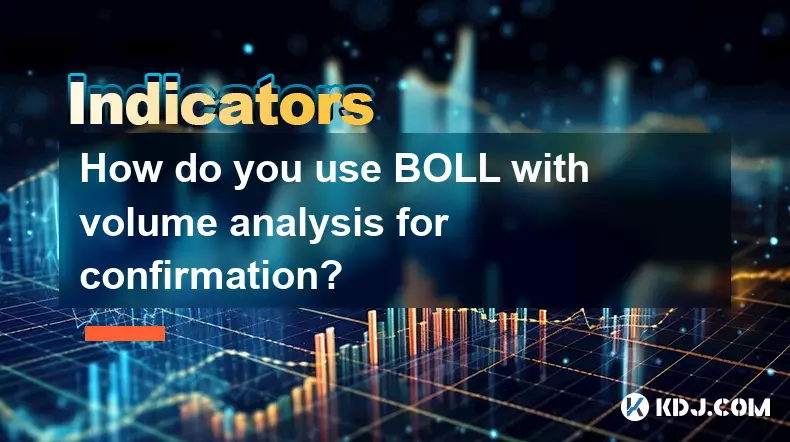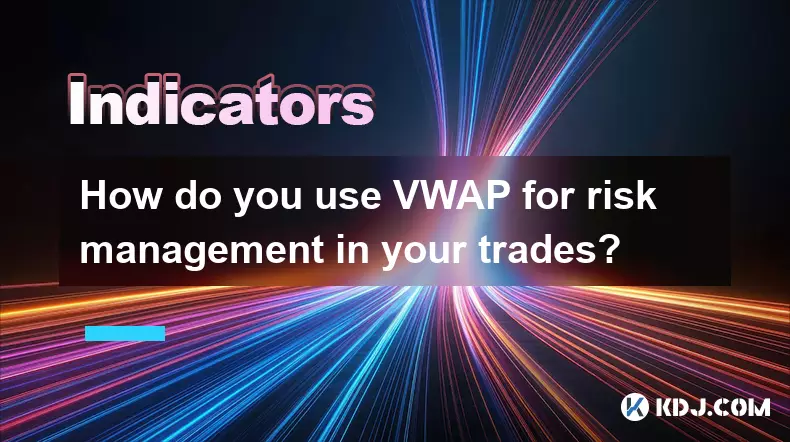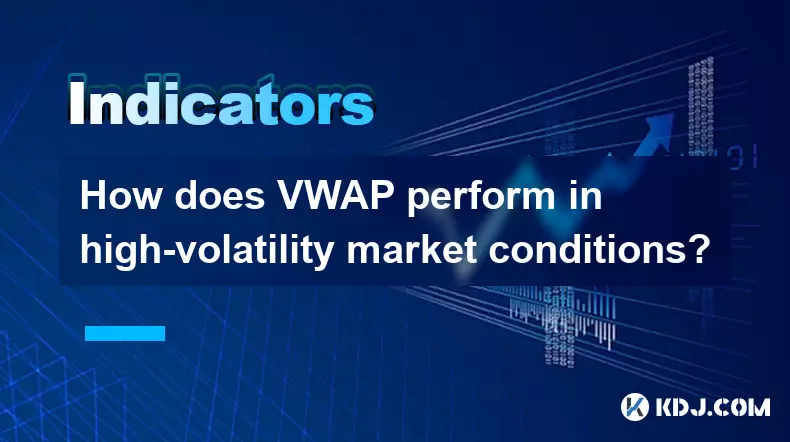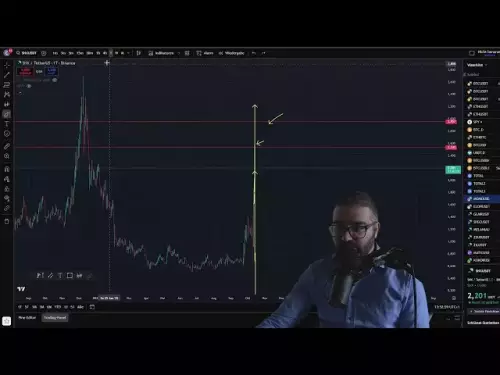-
 bitcoin
bitcoin $115692.075601 USD
5.13% -
 ethereum
ethereum $4162.931611 USD
11.68% -
 bnb
bnb $1310.063287 USD
17.56% -
 tether
tether $1.000983 USD
0.00% -
 xrp
xrp $2.534505 USD
8.16% -
 solana
solana $198.235737 USD
13.49% -
 usd-coin
usd-coin $1.000236 USD
0.02% -
 dogecoin
dogecoin $0.207352 USD
12.89% -
 tron
tron $0.323043 USD
3.62% -
 cardano
cardano $0.701559 USD
11.88% -
 hyperliquid
hyperliquid $39.924597 USD
8.30% -
 chainlink
chainlink $18.934457 USD
11.56% -
 ethena-usde
ethena-usde $1.000552 USD
0.02% -
 stellar
stellar $0.340575 USD
7.05% -
 bitcoin-cash
bitcoin-cash $545.011757 USD
8.86%
How do you use BOLL with volume analysis for confirmation?
Traders who monitor volume spikes at BOLL band extremes can distinguish between genuine breakouts and false moves driven by market noise.
Oct 13, 2025 at 02:01 pm

Understanding BOLL and Volume Dynamics
1. The Bollinger Bands (BOLL) indicator consists of a middle band being an N-period simple moving average and upper and lower bands representing standard deviations from that average. Traders use these bands to identify overbought or oversold conditions, volatility shifts, and potential price reversals.
2. Volume acts as a confirmation tool by reflecting the strength behind price movements. A surge in volume during a breakout from the BOLL bands suggests strong market conviction, increasing the reliability of the signal.
3. When price touches or crosses the upper BOLL band on high volume, it may indicate aggressive buying pressure. Conversely, a drop below the lower band accompanied by elevated volume could reflect intense selling activity.
4. Low volume near band extremes often signals weak participation, hinting at potential false breakouts or traps set by large players to manipulate retail sentiment.
5. Combining BOLL with volume allows traders to filter out noise and focus on high-probability setups where price action and participation align.
Identifying Breakouts with Volume Confirmation
1. A breakout above the upper BOLL band is more credible when supported by a noticeable spike in trading volume. This indicates active accumulation and reduces the likelihood of a temporary overshoot.
2. Similarly, a breakdown below the lower band gains validity when volume expands, showing distribution is occurring with intensity rather than fading momentum.
3. Traders watch for volume patterns such as rising volume on up days within an uptrend or increasing volume on down days in a downtrend to confirm trend continuation after a BOLL touch.
4. Divergence between price breaking out of the bands and flat or declining volume raises caution. It suggests institutional players are not engaging, making the move less sustainable.
5. In ranging markets, repeated price rejections at the BOLL bands with shrinking volume imply indecision and reinforce the range boundaries as key psychological levels.
Spotting Reversals Using BOLL and Volume Clusters
1. A sharp price rejection at the upper BOLL band combined with a volume peak often marks exhaustion among buyers. This setup frequently precedes a pullback or reversal.
2. On the flip side, a swift bounce from the lower band on surging volume can signal capitulation followed by a strong counter-move, especially if it coincides with macro-level catalysts.
3. Volume clustering—where multiple candles show abnormally high volume near a BOLL extreme—acts as a footprint of smart money activity, indicating possible accumulation or distribution zones.
4. If price fails to close beyond a BOLL band despite high volume, it reflects rejection and strengthens the case for a short-term reversal trade.
Traders who monitor volume spikes at BOLL band extremes gain insight into whether moves are driven by genuine demand or algorithmic noise.Common Questions About BOLL and Volume Analysis
Q: What does low volume at a BOLL band touch suggest?A: Low volume when price reaches a BOLL band typically indicates lack of conviction. It may result in a quick reversal or false breakout, especially in illiquid altcoin markets where whales can easily manipulate price.
Q: Can volume divergence predict reversals before they happen?A: Yes. If price makes a new high outside the upper BOLL band but volume is decreasing compared to prior peaks, it shows weakening momentum. This hidden divergence often precedes a reversal even before price confirms it.
Q: How do you adjust BOLL settings when analyzing volume-heavy assets?A: For highly volatile crypto assets, using a 20-period SMA with 2.5 standard deviations can reduce false signals. Pairing this with volume-weighted moving averages helps align BOLL readings with actual trading intensity.
Q: Is volume more important than BOLL position in decision-making?A: Volume provides context to BOLL signals. A touch of the lower band means little without volume confirmation. High volume transforms a routine band touch into a potential turning point, making volume the deciding factor in trade validation.
Disclaimer:info@kdj.com
The information provided is not trading advice. kdj.com does not assume any responsibility for any investments made based on the information provided in this article. Cryptocurrencies are highly volatile and it is highly recommended that you invest with caution after thorough research!
If you believe that the content used on this website infringes your copyright, please contact us immediately (info@kdj.com) and we will delete it promptly.
- XRP Price Prediction: Weekend Rollercoaster or Rally?
- 2025-10-12 08:45:16
- Bittensor (TAO): Super Bullish Signals Point to Potential 2x Rally
- 2025-10-11 10:25:12
- Silver Price Correction: Navigating the Dip & Identifying Key SEO Keywords
- 2025-10-11 10:25:12
- Decoding Crypto Trends: Bittensor's Bull Run, Cardano's Dip, and LivLive's Presale Buzz in 'Uptober 2025'
- 2025-10-12 08:45:16
- MoonBull: The Crypto Meme Coin Promising 1000x Gains?
- 2025-10-11 10:30:01
- Crypto Payroll Revolution: Stablecoins, Altcoins, and the Future of Salary Payments
- 2025-10-11 10:30:01
Related knowledge

What's the main difference between VWAP and TWAP?
Oct 12,2025 at 11:54am
Understanding VWAP and Its Role in Crypto Trading1. Volume Weighted Average Price (VWAP) is a trading benchmark that calculates the average price of a...

How do you identify exhaustion moves using VWAP and its bands?
Oct 12,2025 at 08:00am
Understanding the Role of Decentralized Exchanges in Crypto Trading1. Decentralized exchanges (DEXs) operate without a central authority, allowing use...

What are the main advantages of using VWAP over EMA?
Oct 11,2025 at 02:18am
Main Advantages of Using VWAP Over EMA1. Volume-Weighted Average Price (VWAP) incorporates trading volume into its calculation, offering a more accura...

How do you use VWAP on different chart types like Heikin Ashi?
Oct 11,2025 at 05:01pm
Understanding VWAP in the Context of Heikin Ashi Charts1. The Volume Weighted Average Price (VWAP) is a powerful analytical tool commonly used by trad...

How do you use VWAP for risk management in your trades?
Oct 11,2025 at 02:54am
Understanding VWAP as a Dynamic Benchmark1. The Volume Weighted Average Price (VWAP) serves as a crucial reference point in intraday trading by reflec...

How does VWAP perform in high-volatility market conditions?
Oct 10,2025 at 08:00pm
Understanding VWAP in Turbulent Market Phases1. Volume-Weighted Average Price (VWAP) serves as a benchmark for institutional traders aiming to assess ...

What's the main difference between VWAP and TWAP?
Oct 12,2025 at 11:54am
Understanding VWAP and Its Role in Crypto Trading1. Volume Weighted Average Price (VWAP) is a trading benchmark that calculates the average price of a...

How do you identify exhaustion moves using VWAP and its bands?
Oct 12,2025 at 08:00am
Understanding the Role of Decentralized Exchanges in Crypto Trading1. Decentralized exchanges (DEXs) operate without a central authority, allowing use...

What are the main advantages of using VWAP over EMA?
Oct 11,2025 at 02:18am
Main Advantages of Using VWAP Over EMA1. Volume-Weighted Average Price (VWAP) incorporates trading volume into its calculation, offering a more accura...

How do you use VWAP on different chart types like Heikin Ashi?
Oct 11,2025 at 05:01pm
Understanding VWAP in the Context of Heikin Ashi Charts1. The Volume Weighted Average Price (VWAP) is a powerful analytical tool commonly used by trad...

How do you use VWAP for risk management in your trades?
Oct 11,2025 at 02:54am
Understanding VWAP as a Dynamic Benchmark1. The Volume Weighted Average Price (VWAP) serves as a crucial reference point in intraday trading by reflec...

How does VWAP perform in high-volatility market conditions?
Oct 10,2025 at 08:00pm
Understanding VWAP in Turbulent Market Phases1. Volume-Weighted Average Price (VWAP) serves as a benchmark for institutional traders aiming to assess ...
See all articles










































































